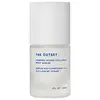What's inside
What's inside
 Key Ingredients
Key Ingredients

 Benefits
Benefits

 Concerns
Concerns

 Ingredients Side-by-side
Ingredients Side-by-side

Water
Skin ConditioningButylene Glycol
HumectantGlycerin
HumectantSclerocarya Birrea Seed Oil
HumectantNiacinamide
SmoothingTetradecane
PerfumingCapryloyl Glycerin/Sebacic Acid Copolymer
Skin ConditioningDiheptyl Succinate
EmollientBenzyl Alcohol
PerfumingGlyceryl Oleate
EmollientSucrose Palmitate
EmollientHydroxyacetophenone
AntioxidantCarbomer
Emulsion StabilisingAcrylates/C10-30 Alkyl Acrylate Crosspolymer
Emulsion StabilisingCaprylyl Glycol
EmollientSodium Hydroxide
BufferingDisodium Phosphate
BufferingSodium Phosphate
BufferingSodium Hyaluronate
HumectantDilauryl Thiodipropionate
AntioxidantAcetyl Hexapeptide-8
HumectantWater, Butylene Glycol, Glycerin, Sclerocarya Birrea Seed Oil, Niacinamide, Tetradecane, Capryloyl Glycerin/Sebacic Acid Copolymer, Diheptyl Succinate, Benzyl Alcohol, Glyceryl Oleate, Sucrose Palmitate, Hydroxyacetophenone, Carbomer, Acrylates/C10-30 Alkyl Acrylate Crosspolymer, Caprylyl Glycol, Sodium Hydroxide, Disodium Phosphate, Sodium Phosphate, Sodium Hyaluronate, Dilauryl Thiodipropionate, Acetyl Hexapeptide-8
Water
Skin ConditioningPropanediol
SolventGlycerin
HumectantTriheptanoin
Skin ConditioningCoco-Caprylate/Caprate
EmollientSodium Polyacryloyldimethyl Taurate
Emulsion StabilisingCapryloyl Glycerin/Sebacic Acid Copolymer
Skin ConditioningCassia Angustifolia Seed Polysaccharide
Skin ConditioningHelianthus Annuus Seed Oil
EmollientHeterotheca Inuloides Flower Extract
MaskingChenopodium Quinoa Seed Extract
Skin ConditioningPoncirus Trifoliata Fruit Extract
Skin ConditioningHydrolyzed Brassica Napus Seedcake Extract
Skin ConditioningSr-Hydrozoan Polypeptide-1
HumectantCastor Oil/Ipdi Copolymer
Diheptyl Succinate
EmollientPhenoxyethanol
PreservativeDilinoleic Acid/Butanediol Copolymer
Caprylyl Glycol
EmollientHydrolyzed Jojoba Esters
Skin ConditioningLysolecithin
EmulsifyingSclerotium Gum
Emulsion StabilisingTetrahexyldecyl Ascorbate
AntioxidantTocopheryl Acetate
AntioxidantTetrasodium Glutamate Diacetate
Pullulan
Xanthan Gum
EmulsifyingJojoba Esters
EmollientSilica
AbrasiveCitric Acid
BufferingSodium Benzoate
MaskingSodium Formate
BufferingSodium Glycolate
BufferingSodium Hydroxide
BufferingSodium PCA
HumectantPotassium Hydroxide
BufferingPotassium Sorbate
PreservativeWater, Propanediol, Glycerin, Triheptanoin, Coco-Caprylate/Caprate, Sodium Polyacryloyldimethyl Taurate, Capryloyl Glycerin/Sebacic Acid Copolymer, Cassia Angustifolia Seed Polysaccharide, Helianthus Annuus Seed Oil, Heterotheca Inuloides Flower Extract, Chenopodium Quinoa Seed Extract, Poncirus Trifoliata Fruit Extract, Hydrolyzed Brassica Napus Seedcake Extract, Sr-Hydrozoan Polypeptide-1, Castor Oil/Ipdi Copolymer, Diheptyl Succinate, Phenoxyethanol, Dilinoleic Acid/Butanediol Copolymer, Caprylyl Glycol, Hydrolyzed Jojoba Esters, Lysolecithin, Sclerotium Gum, Tetrahexyldecyl Ascorbate, Tocopheryl Acetate, Tetrasodium Glutamate Diacetate, Pullulan, Xanthan Gum, Jojoba Esters, Silica, Citric Acid, Sodium Benzoate, Sodium Formate, Sodium Glycolate, Sodium Hydroxide, Sodium PCA, Potassium Hydroxide, Potassium Sorbate
 Reviews
Reviews

Ingredients Explained
These ingredients are found in both products.
Ingredients higher up in an ingredient list are typically present in a larger amount.
We don't have a description for Capryloyl Glycerin/Sebacic Acid Copolymer yet.
Caprylyl Glycol is a humectant and emollient, meaning it attracts and preserves moisture.
It is a common ingredient in many products, especially those designed to hydrate skin. The primary benefits are retaining moisture, skin softening, and promoting a healthy skin barrier.
Though Caprylyl Glycol is an alcohol derived from fatty acids, it is not the kind that can dry out skin.
This ingredient is also used as a preservative to extend the life of products. It has slight antimicrobial properties.
Learn more about Caprylyl GlycolWe don't have a description for Diheptyl Succinate yet.
Glycerin is already naturally found in your skin. It helps moisturize and protect your skin.
A study from 2016 found glycerin to be more effective as a humectant than AHAs and hyaluronic acid.
As a humectant, it helps the skin stay hydrated by pulling moisture to your skin. The low molecular weight of glycerin allows it to pull moisture into the deeper layers of your skin.
Hydrated skin improves your skin barrier; Your skin barrier helps protect against irritants and bacteria.
Glycerin has also been found to have antimicrobial and antiviral properties. Due to these properties, glycerin is often used in wound and burn treatments.
In cosmetics, glycerin is usually derived from plants such as soybean or palm. However, it can also be sourced from animals, such as tallow or animal fat.
This ingredient is organic, colorless, odorless, and non-toxic.
Glycerin is the name for this ingredient in American English. British English uses Glycerol/Glycerine.
Learn more about GlycerinSodium Hydroxide is also known as lye or caustic soda. It is used to adjust the pH of products; many ingredients require a specific pH to be effective.
In small amounts, sodium hydroxide is considered safe to use. However, large amounts may cause chemical burns due to its high alkaline.
Your skin has a natural pH and acid mantle. This acid mantle helps prevent harmful bacteria from breaking through. The acid mantle also helps keep your skin hydrated.
"Alkaline" refers to a high pH level. A low pH level would be considered acidic.
Learn more about Sodium HydroxideWater. It's the most common cosmetic ingredient of all. You'll usually see it at the top of ingredient lists, meaning that it makes up the largest part of the product.
So why is it so popular? Water most often acts as a solvent - this means that it helps dissolve other ingredients into the formulation.
You'll also recognize water as that liquid we all need to stay alive. If you see this, drink a glass of water. Stay hydrated!
Learn more about Water